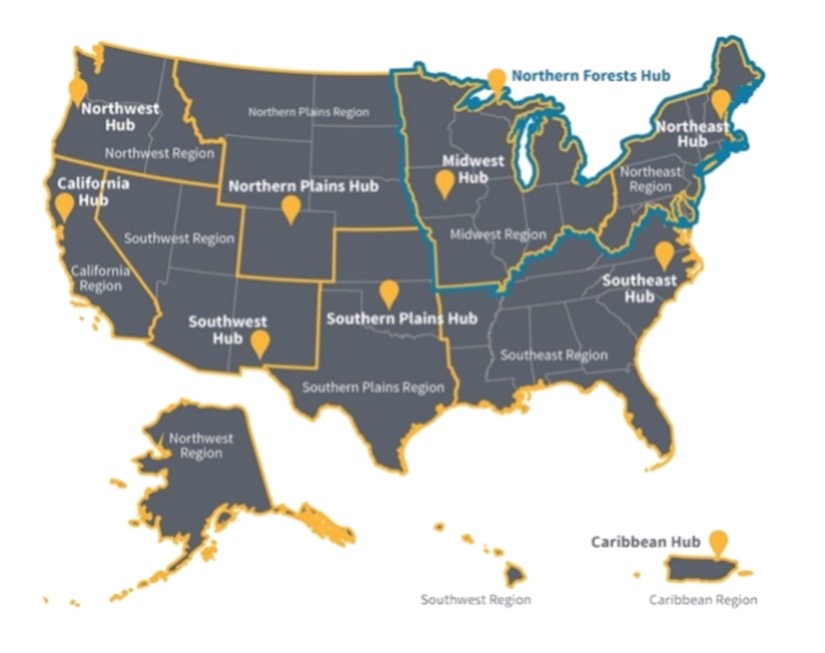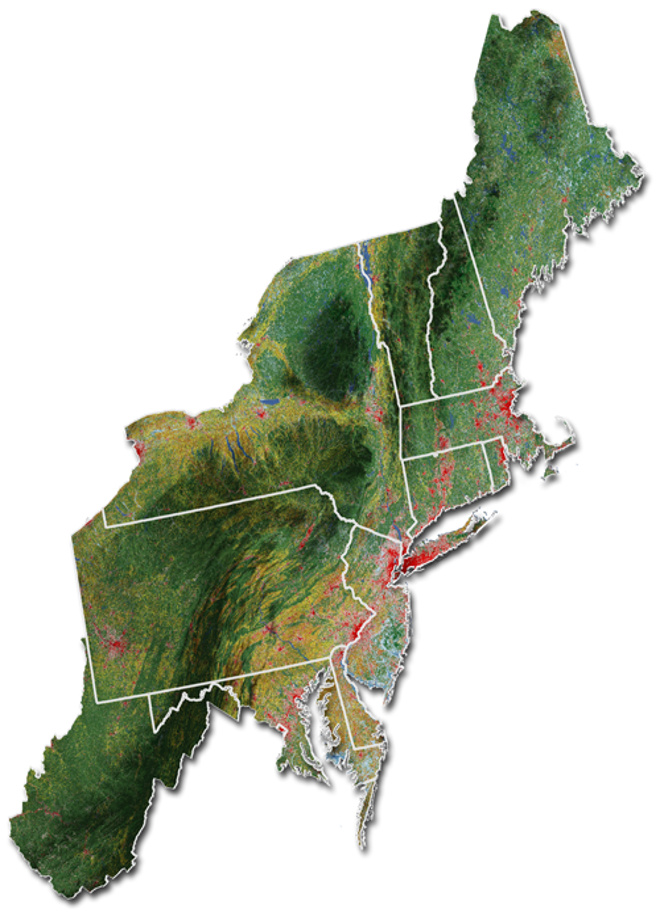A USDA Climate Hub Directors Forum was recently held in Washington, DC. It was a unique event where Directors of the ten Climate Hubs from across the country came together to share lessons and accomplishments of the Climate Hub program with each other, USDA agency and mission area leaders, and the US Secretary of Agriculture, Thomas Vilsack.
Our common goal is to reduce the risks of climate change on working lands and communities, both at regional and national levels. If you are new to the Climate Hubs, let me share some background.
Almost Ten Years Old
The USDA Climate Hubs were established by the USDA in 2014 in response to then President Obama’s Climate Action Plan. Currently, there are ten Climate Hubs strategically located in different regions of the US, including the Northeast, Southeast, Northern Forest, Midwest, Northern Plains, Southern Plains, Southwest, Northwest, California, and Caribbean. The creation of regional Hubs recognizes that climate change affects different parts of the country in distinct ways. This then requires regional-specific approaches to adapt to and mitigate the regional climate impacts. For instance, what works in the Northeast to address increased precipitation may not be useful in the Southwest, which is grappling with prolonged droughts and extreme heat.
The core mission of the Climate Hubs is to develop and deliver science-based, region-specific information and technologies to enable climate-informed decision making. Each Hub is tasked with addressing the unique climate challenges and opportunities of its region, while also working with other Hubs to develop and share information nationwide. The Hubs embody a collaborative effort across various USDA mission areas and agencies, including the Forest Service, the Agricultural Research Service, the Natural Resources Conservation Service, and others, working together as “OneUSDA.”

How We Work
The Hubs operate through three Work Streams and eight Priority Areas. The Work Streams include:
- Science and Data Synthesis: The Hubs translate and deliver the latest climate science information relevant to our users. This includes regional risk and vulnerability assessments as well as contributions to the National Climate Assessment.
- Tool Development and Support: The Hubs help develop and support tools that enable climate-informed planning and decision making. So far, the Hubs have collaborated on the development of over 25 climate-based tools.
- Outreach, Convening, and Training: The Hubs promote engagement, discovery, and exchange of information on climate science and climate-based tools to adapt to and mitigate the effects of climate change. This involves engaging with farmers, foresters, and land managers, often going directly to where they are located. The Hubs develop products such as fact sheets, science briefs, opportunities for peer-to-peer engagements, workshops, webinars, and multimedia products. An example of this work is the Climate Conversations led by the Natural Resources Conservation Service across the Hub regions.
Within the Work Streams, the Hubs address a suite of eight Priority Areas. These include Adaptation/Resilience, Mitigation, Adaptation Plan Implementation, Wildland Fire Management/Restoration, Climate Literacy, Climate Smart Agriculture and Forestry Practices, Environmental Justice, and International Work. It’s a big task, but by working across agencies, the Hubs can leverage the combined expertise and resources of the USDA for greater impact.

Your Home Hub
The USDA Northeast Climate Hub includes the twelve Northeastern States plus the District of Columbia. We foster collaborations among the Forest Service, Agricultural Research Service, Natural Resource Conservation Service, Land Grant Universities, non-profit organizations, and state and private partners. Our team includes a Director, Coordinator, Digital Content Manager, five co-leads, four post-doctoral fellows, professional staff, and many collaborators. Currently, we have over 20 active projects that focus on various areas such as agriculture, forestry, weather/climate, agroforestry, climate education, and climate equity. To receive updates about these projects, sign up for our digital newsletter, the Quarterly Harvest.
Closing Thoughts
In conclusion, we’re all in this together! The USDA Climate Hubs are working at national and regional levels, and are leveraging the combined resources of multiple agencies within USDA to tackle the global climate crisis. Please feel free to contact our team if you have questions about the Climate Hubs or our work. Together, we can make a difference.

